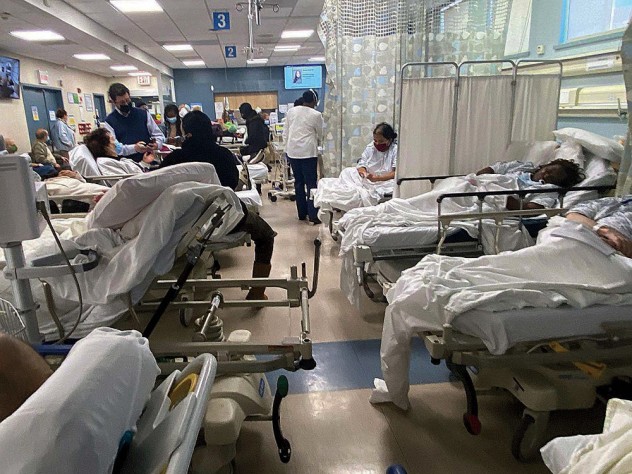Behind the Scenes: Keeping up with COVID-19
Managing editor Jonathan Shaw explains the challenges of reporting during an evolving pandemic and why he chose the experts he interviewed for his latest cover story.
The challenge of writing about the continuing pandemic, as the virologist Dan Barouch succinctly observed in a recent conversation, is that any news more than two weeks old is old news (or worse, no longer true). So, when I began to write a feature article about the coronavirus as the cover story for Harvard Magazine’s September-October edition—knowing that I would need to turn in a text a full six weeks before anyone would read it—addressing this problem of timeliness was a prime concern.
I’ve been incredibly fortunate since early 2020 to have spoken firsthand with several of this country’s leading epidemiologists and public-health leaders—members of the University’s medical, public-health, and other faculties—about viral transmission, testing, and vaccine efficacy; to have listened in on numerous medical grand-rounds talks hosted by Harvard-affiliated hospitals as physicians on the front lines presented what they learned in the COVID wards; and to have spoken numerous times with the aforementioned virologist Dan Barouch, Castle professor of medicine, who helped develop the Johnson & Johnson vaccine.
By mid-2021, when I began writing, vaccination efforts in the United States had begun to pay dividends. And yet, even as the danger waned domestically, at least for the vaccinated, viral variants that were more transmissible and deadlier began to spread globally, posing increasing risks to the predominantly unvaccinated residents of poorer countries whose governments had been unable to secure supplies of vaccine for their populations. The disastrous global death toll of 2020, it was obvious, would be eclipsed in 2021.
Given this unfolding international tragedy, the decision to speak with Megan Murray, a professor of global health, was an obvious one. An expert in another global respiratory disease linked to socioeconomic factors—tuberculosis—she has a talent for seeing and communicating the big picture. She is both knowledgeable and wise.
Lindsey Baden, the second of the trio of experts who appear in the article, co-led a working group of the Massachusetts Consortium on Pathogen Readiness (MCPR), whose public and scientific presentations I followed throughout the pandemic. The MCPR is an initiative coordinated by Harvard Medical School that convenes hundreds of researchers from 20 Boston-area universities, medical schools, research institutes, and teaching hospitals to address this pandemic—and to prepare for the next one. Baden spoke frequently and energetically at MCPR meetings about clinical management of COVID-19 disease—and leads a continuing clinical trial of the Moderna vaccine. Given that, as of September 2021, only three percent of Africans are vaccinated, for example, the need for effective clinical treatments will be immense.
Finally, Dan Barouch has been instrumental in developing an adenovirus-vectored vaccine platform he has deployed against both HIV (that mosaic vaccine is now in phase three clinical trials) and Zika virus. When the SARS CoV-2 outbreak began in China, Barouch’s lab rapidly partnered with Johnson & Johnson/Janssen to develop a vaccine—notably, a low-cost, single shot with less stringent refrigeration requirements than mRNA vaccines—that could be deployed worldwide, even in under-resourced settings.
There are dozens, if not hundreds of Harvard researchers who have profound insights to share about the pandemic, and it is a privilege made possible by reader support to listen to their lectures, read their papers, and cover their presentations to the public. These faculty have been generous with their time, during one of the most severe health crises of their professional lives, because they value the reporting Harvard Magazine does about these critical issues.
Given the global nature of this disastrous event, my hope was to sketch for readers, as seen through the eyes of these particular three leaders in public health, infectious disease, and virology, the broad outlines of what has been learned so far, what must be done to bring this chapter to a close in the years ahead, and what governments should be thinking about to prepare for the next pandemic.
Read “The State of the Pandemic”

